Firefighter Joe Collins: Breathing Fire
I’m a twelve-year veteran firefighter/paramedic in the busiest volunteer fire department in our county. I hold numerous fire and EMS certifications—many of the same as professional firefighters. My day job is as a Critical Care Paramedic in the highest call volume EMS service in Iowa.
Breathing Fire
In the old days of firefighting, firefighters rarely entered a burning building as the environment was hot, smoky and filled with dangerous gases that could kill immediately or slowly—over years and why many of those old firefighters are dead from cancer.
SCBA—Self Contained Breathing Apparatus has evolved over the years into equipment that can protect a firefighter in IDLH (Immediate Danger to Life and Health) Atmospheres. Note, these aren’t rated for use in deep water like SCUBA.
An important fact that is gotten wrong by many writers and reporters is that the bottles used in SCBA don’t contain pure oxygen, but the same air that you breathe—though filtered. Oxygen is an accelerant and if there was a leak, it would be like having a flame thrower on your back.
The typical SCBA is comprised of several components starting with the air bottle. The old air bottles were made of steel and rarely could take a pressure of more than 2300 PSI, so they didn’t provide as much time in a fire. They were also quite heavy.
old bottle
Modern bottles are constructed of aluminum covered with spun fiberglass or carbon fiber and are filled to pressures of 4,500 PSI. In theory, that means that you can breathe for forty-five minutes in a fire—which never happens even under ideal conditions.
scba bottle
Since you can’t breathe air at 4,500 PSI, so there are two regulators, the first stage to reduce the pressure of air to allow it to be used by the mask, and a second stage to reduce it to a level just above atmospheric pressure.
pressure
Air is delivered to the mask via a demand valve—which means that they are activated by inhalation. A safety feature is that if your mask seal against your face is broken, it will provide continuous positive pressure—providing constant airflow to keep smoke and other dangerous gases out of the mask.
regulator
This is an SCBA. Ours are made by MSA, but there are several manufacturers.
SCBA
What you see here is a a combined PASS device along with an air gauge. Various alarms, from bells to buzzers mean that you have less than ten-minutes of air remaining and better get out of the fire.
PASS
A PASS device (Personal Alert Safety System) is a personal safety device used primarily by firefighters which sounds a loud audible alert notifying others in the area that a firefighter is in trouble. The PASS device will automatically activate if the device does not detect motion for a certain short time, typically 15-30 seconds, so that the alert will sound if the firefighter is seriously injured or otherwise incapacitated. They are loud, at least 95-decibels and can be manually activated by the firefighter if they get into trouble.
Our masks have a display which shows the remaining air. Some SCBA even have remote monitoring—each firefighter’s air status and other information can be monitored from outside the building.
Mask Display
scba mask
Many of the seats in fire apparatus have SCBA holders built into them. You sit on the seat, put on your safety belt and can slip on your air pack and other equipment. When you arrive on a fire scene, you pull a cord to release the SCBA.
911 Seat
Extra air packs and bottles are stored in various places all throughout the apparatus. When a firefighter comes out from the fire, they can, generally in less than a minute, change out their air bottle for a full one and the empty ones refilled.
Extra Bottles
Stowed SCBA
SCBA bottles are filled using a cascade system. There is one on our Engine 1, as you can see here. There are three six-thousand PSI tanks. How a cascade system works and is used is for another article.
E1 Cascade
There is no air compressor on the engine, so those air bottles are filled from a cascade system in the fire station that does have an air compressor. The yellow cylinder that you see in both pictures holds the bottles while they are being filled, to provide protection if the bottle ruptures.
Cascade Compressor
SCBA systems typically weigh about 25 lbs and start at about $1,500 and can easily go above $7,000. This means that a firefighter, full outfitted, when they step of the apparatus, ready to fight the fire, is wearing upwards of 60 lbs of gear costing up to or over $10,000.
* * *
Want to learn more about firefighters and firefighting equipment? The Writers’ Police Academy features an on-site, working fire station. You’ll have to opportunity to see, touch, and try on the gear!
http://www.writerspoliceacademy.com/

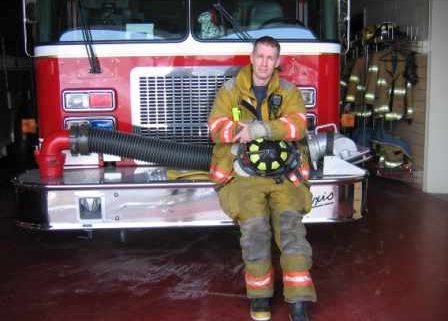
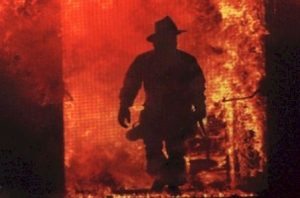
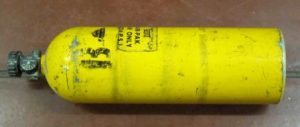
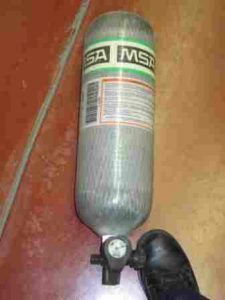

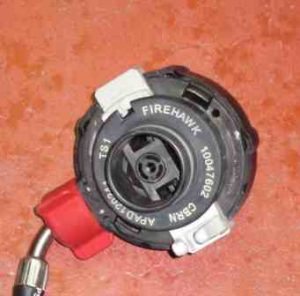
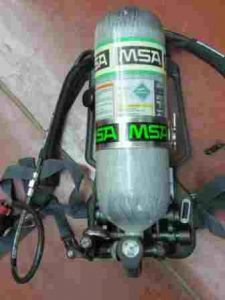
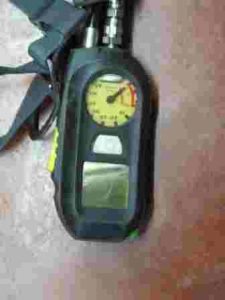


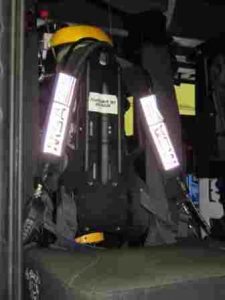
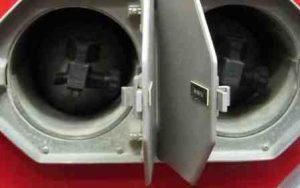
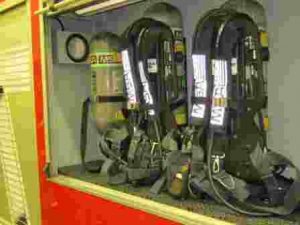
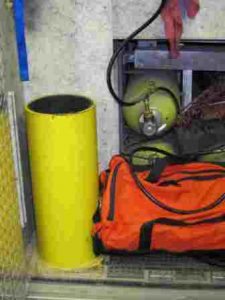
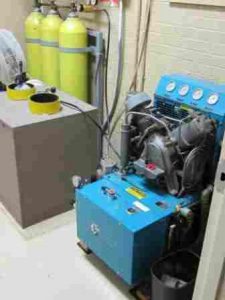
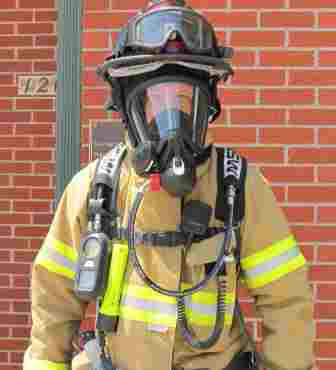





Awesome info, Joe. Makes me even prouder of our firefighters. It amazes me that you all can work with all that extra weight and bulk.
Loved seeing the pictures and close-up details.